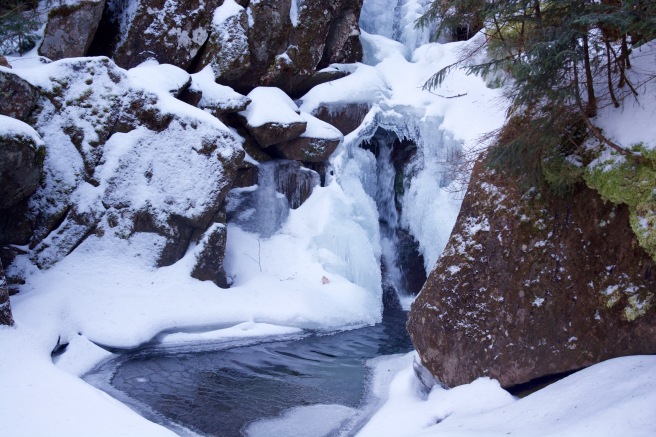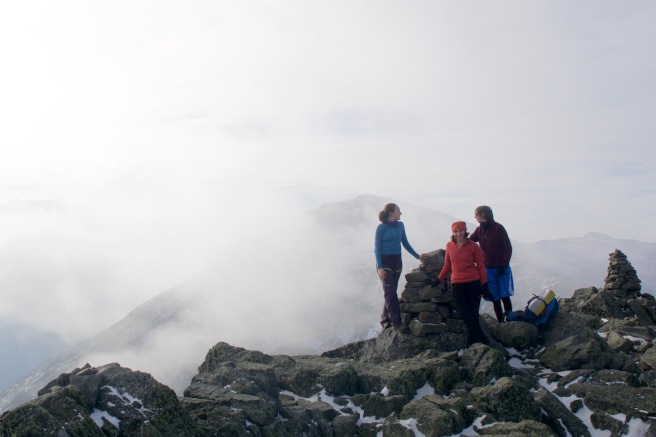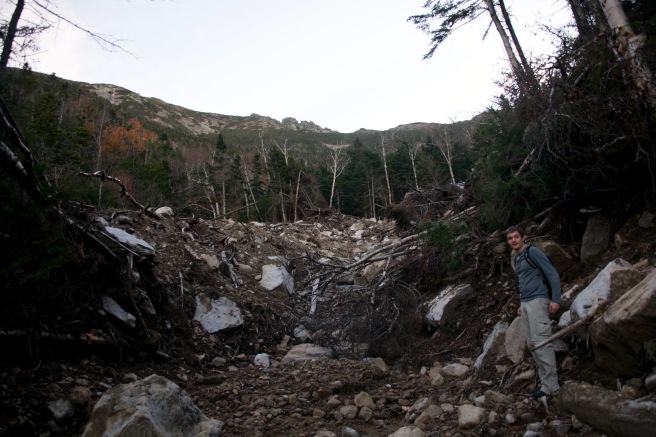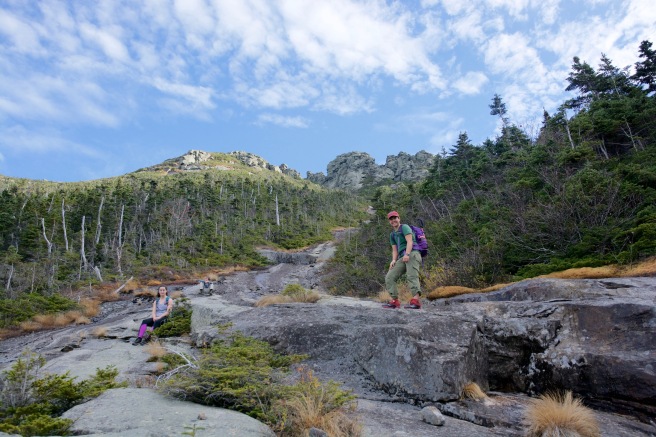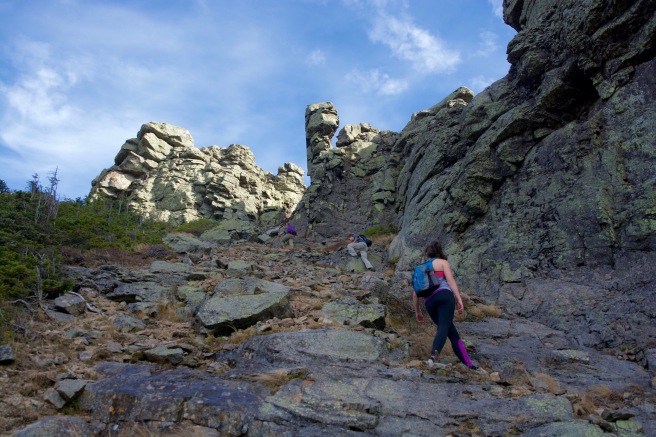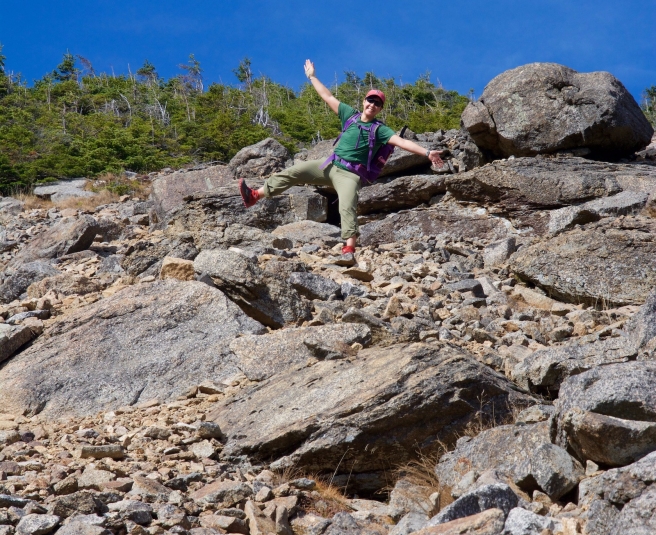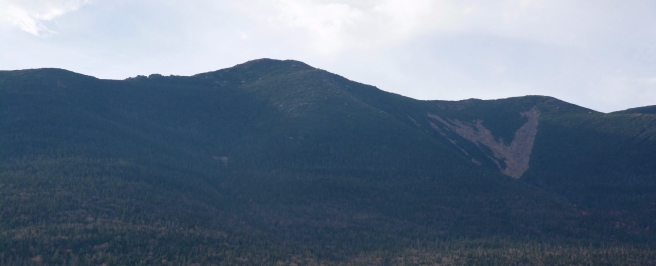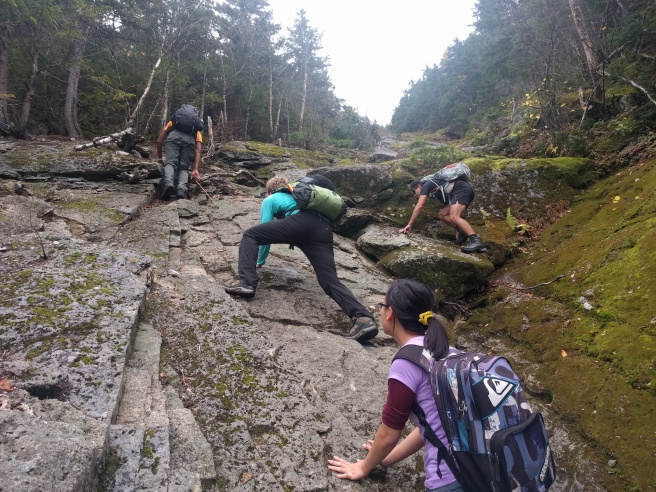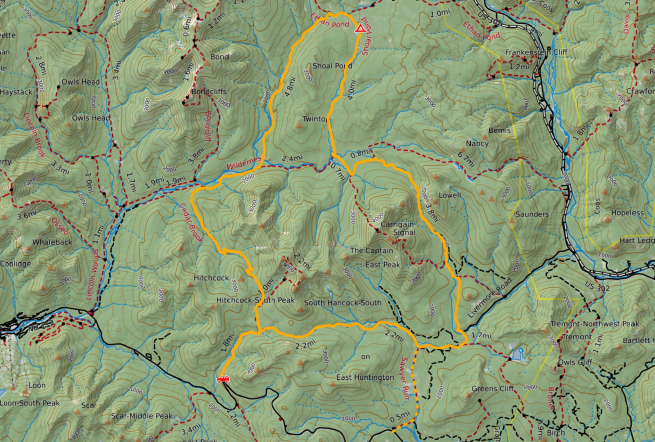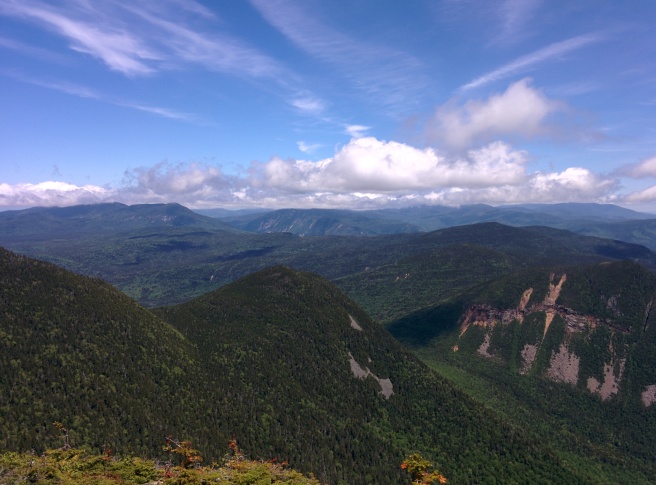Keeping your hands warm when winter hiking is critical to enjoying your time in the outdoors. This post contains information about how I go about crafting a layering scheme to keep my hands warm when hiking above and below treeline on even the coldest days in the winter. It also has a series of tips and tricks that I use to help keep my hands warm and happy, and a few tips to help debug why your hands might still be cold even once you’ve purchased a nice pair of mittens.
Layering for your Hands
Just like how you have to come up with a good layering scheme for your body to manage sweat and stop yourself from overheating when winter hiking, the same is absolutely true for your hands. With so many varied situations you might find yourself in, there is no one-stop-shop glove for any price that will suit your needs in all conditions you may experience. This will probably seem excessive to the light-and-fast crowd, but I typically carry five different layering pieces for my hands on every hike, with backups for the ones that get wet most often. This many layers let me constantly adjust my hands for different amounts of necessary warmth and dexterity.
Vapor Barrier Layer (Optional)
The first layer I typically have in my pack is a pair of latex (or non-latex) gloves that I can use to create a vapor barrier between my hand and the outside world when conditions really get cold. While it doesn’t allow sweat to evaporate off your hands, the vapor barrier works by creating a micro-climate around your hand that actually stops your hand from sweating once it hits a certain moisture level. The vapor barrier helps block wind and water from reaching my hand which overall can improve warm.
Sweat Management Layer
This layer is often referred to as a “liner glove” and is responsible for taking the sweat your body is producing on your hand and transporting it away from your skin. This action helps stop your hand getting chilled by the wind. These layers are typically made of either Wool or Synthetic and are very light and stretchy. They offer a small amount of protection from the wind but almost no protection from outside water sources (rain, snow, etc). I usually hike with at least three of this layer since by design it will become wet over time as it attempts to transport your sweat from skin to air. I typically start a hike with one of these on and it rarely leaves my hand during the day. Halfway through the hike I switch to a dry pair, and one pair stays dry in my pack as a backup.
Buying Advice
Fit: Liners should not hang loosely on your hands, or be too stretched out when putting them on. They should be comfortable similar to wearing a base layer on your torso.
Durability: These liners will take a lot of abuse and it is often worth upgrading to a brand known for their durability.
Features: If you use your phone for pictures make sure your liners are also touch screen compatible!
I’ve been carrying three pairs of Smartwool Liner Gloves for the last few years and like how they hold up better than other similar liners I’ve used.
Mid-weight Warmth Layer
Most of the time on below treeline hikes I’m totally fine just wearing a liner glove throughout the moving portion of the day and a shell glove during breaks. However on really cold days it’s important to have an extra warmth layer that can be worn to keep your hands toasty while still allowing some sweat to escape when you’re working hard. These mid-layers are typically made of fleece and come in a variety of thicknesses depending on your preference. Most will be heavy enough to block a fair amount of wind but still don’t provide more than incidental moisture protection.
Buying Advice
Fit: Find a pair that fits when worn with your thinner liner gloves to stack the benefits (and warmth) of each layer.
Features: Leather or Rubber on the palms (either full or patterned) can help with grip and dexterity. Some gloves will have elastic around the wrist to help lock out drafts and snow.
Black Diamond makes a nice Fleece Mid-Weight Liner Glove that I find offers a good balance between dexterity and warmth. I carry one pair on each hike and typically keep it in a dry-bag for when it’s really needed.
Shell Layers (Gloves and Mittens)
The last layers you absolutely must have when winter hiking are good waterproof shell layers. Typically most hikers will take both a heavyweight glove for dexterity and a heavyweight mitten for warmth. In either case both should be well-made of either Synthetic (Goretex or equivalent) or Leather and be absolutely wind and waterproof. These gloves are your first line of defense against the elements on a windy day above treeline or when your encounter unexpected wet wintery mix.
Buying Advice
Fit: It is critical when sizing gloves and mittens that they’re both comfortable and not too tight when you’re wearing them with your liner gloves. You should never have to expose your bare hand in order to switch from one layer to your shells. Currently I size my shell gloves so that they fit with my light liners and size my mittens so that they fit with my mid-weight fleece gloves.
Dexterity: When buying gloves or mittens try wearing them with the liners you expect to wear and see if you can perform simple tasks. If you can’t eat / drink / zip with them on you will be frequently taking them off to perform these tasks. I usually check if I can unzip my coat or bag and unscrew the top off a water bottle.
Features: Shells are certainly the most feature rich of your hand layering scheme. Here are the ones you are most likely to encounter:
-
- Leash – To me a leash is critical. The leash is a thin coord that connects the glove or mitten to your wrist. It allows you to take it off without worrying that it will blow away. Very comforting above treeline.
- Elastic Gauntlet – Allows you to cinch the glove tight around your wrist to stop both cold air and snow from getting inside.
- Hand Warmer Pocket – A small pocket on the top of the glove where a hand warmer can be placed.
- Nose Wipe – Some gloves will have a velvet patch on the nose / pointer finger to make wiping your nose a little more pleasant. After 6 hours of rubbing your nose this is actually incredibly welcome.
- Clips – Allows the gloves to be clipped together to avoid losing either side.
- Pull Loop – Allows the glove to be pulled off easier.
With large hands and poor circulation, I went through many gloves before I found ones that worked for me. I landed on a Hestra C-Zone Ski and Cold Weather Gloves for a waterproof glove and a Burton Gore-tex Mitt
for my mittens. Both have served my very well on many trips each winter season.
Hand Warmth Tips and Tricks
Here is a list of tips and tricks that I use along with my layering scheme to help expedite the warming process when my hands really start feeling the chill on a hike.
Use your Body, Not your Hands, to Heat your Gloves
This trick is actually quite popular when ice climbing but has completely changed my winter hiking experience as well. Instead of keeping your gloves in the brain or body of your pack keep them inside your torso layers so that they are pre-warmed by your body. When you first put on cold gloves your hands need to warm the glove before they can capture heat for themselves. This can lead to making your hands colder directly after your put on your gloves. By warming them against your body first they’re ready to go when you put them on. Above treeline I will typically keep whichever glove or mitten I’m not currently wearing warm inside my shell jacket.
Tight Gloves = Cold Hands
If your gloves are too tight or if they’ve been cinched down too tight it can prevent nice warm blood from flowing to your hands. Buying a size too small, not trying them on with your liners, or strapping them too tight can all lead to restricted blood flow to your hands. If you put on a pair of gloves or mittens and find that your hands are still getting colder, try loosening them or taking them off and see if you feel the return of normal circulation to your hands. If you do, bring them back to the store and get a size up.
Hand Warmers Can and Do Fail
If you typically find yourself with cold hands when hiking its a good idea to hike with hand warmers. These warmers typically rely on a chemical reaction with the air to generate heat for 6 – 12 hours depending on the brand. They are mass-produced however and defective ones do slip through to the public. Hand warmers can and do fail to heat, often when you need it most. Always bring extra pairs, and if you don’t feel them heating up after 20 – 30 minutes switch them out for a new pair.
Questions? Comments? Tips and tricks of your own? Let me know in the comments!
Disclaimer: If you make a purchase through the above links a portion of the sales will go to the author to help pay for and create content for this site.






